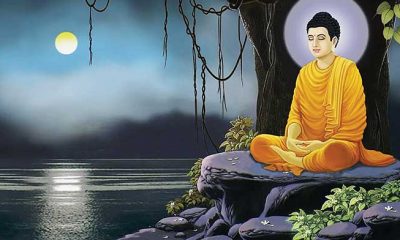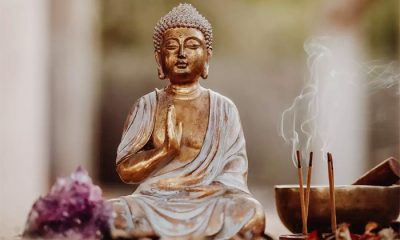Opinion
Meaning of life from Buddhist perspective
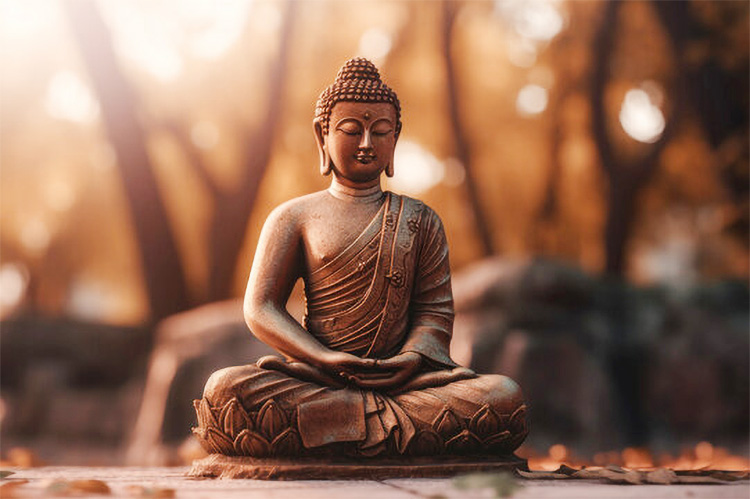
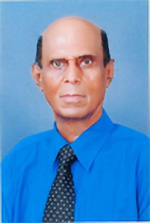 By Dr. Justice Chandradasa Nanayakkkara
By Dr. Justice Chandradasa Nanayakkkara
“Man is born: to live, to suffer: and to die, and what befalls him is a tragic lot. There is no denying this in the end”. This pithy saying of great poignancy attributed to a well known American novelist Thomas Wolfe sums up the lot of mankind on this earth. It carries a profound insight and a deep philosophy of life.
In the face of this statement, the question arises. What is the meaning of life. Why are we here? Why were we born if we were to suffer and die eventually? All of us see life differently and the true meaning of life is far too complex for any human being to comprehend. It is a complex existential question. For ages, it has perplexed many spiritual leaders, philosophers, and other great thinkers. Throughout history, it has also given rise to much philosophical, scientific, and theological speculation.
We live in a restless competitive world, in which men find themselves directionless, uncertain, and lost about the purpose of their existence and they are faced with the existential dilemma of not knowing what to do with their lives. As a result, they look for meaning and direction in life and a quest to escape the fragility of their mortal existence and suffering. , there is an inherent tendency to seek permanence and purpose.
Some believe that the purpose of life is the pursuit of happiness and pleasure. They act under the hedonistic delusion that it is possible to lead a life bereft of pain and suffering by maximising their happiness and minimising suffering by amassing material wealth and possessions. While some others believe life is to fulfill a religious or spiritual destiny. Still, others look at life from a biological perspective, and for them, the purpose of life is to survive procreate, and ensure the continuation of species.
The meaning of life is deeply bound up with the religious conceptions of existence. Many monotheistic religions such as Christianity believe in an omnipotent, creator God who made us and is responsible for our existence and creation. It is this creator God who rewards and punishes the good deeds and ill deeds of the creatures of his creation. It teaches human life has meaning only when it is lived following God’s will and commandments as God rewards with eternal bliss those who live per his commandments. And the lives of those who act in violation of his commandments have no meaning end in disgrace and lead to hell. It leaves the meaning of life not to the individual but to the creator God.
Buddha on the other hand builds his discourse on the issue of human suffering and the nature of our existence. According to Buddhism, our life is characterised by dukkha (suffering), all beings suffer in one way or another. Suffering may be physical or mental or both. Suffering is brought about by all conditioned things that depend on causes, they continue to change with the changes of causes and conditions, and they do not have a permanent form. Mahaparinibbna sutta states “Impermanent are all component things, they arise and cease, that is their nature’, They come into being and pass away, Release from them is bliss supreme” (Annicca vata sankara -uppada vaya dha mmino, Uppajitva nirujjhanti -tesam vupasamosukkho.)
The essence of Buddha’s teaching is contained in his four noble truths. They are the truth of suffering, the origin of suffering, the cessation of suffering the path that leads to the cessation of suffering, and the final liberation from suffering (nirvana).
The first noble truth expounds human life is pervaded by dukkha (Suffering). Life has pleasant phases and happy moments but the sense of frustration emptiness suffering pervades the lives of all people. Human life is inherently frustrating and pervaded by a sense of suffering. Dukkha can be anything from small irritations to intense suffering. Dukkha encompasses not only tragedies, death, and grief, but also, old age, diseases, association with the unpleasant, separation from loved ones and. notions such as insubstantiality, impermanence, and a lack of satisfaction. It also includes extreme poverty, hunger starvation, and suffering people undergo as a result of wars.
Most of the suffering people are subject to is self-created. It is how we react to it that determines whether or not we suffer. In Buddhism, there is a cause and solution for our suffering. The solution cannot be found by placing any reliance on an omnipotent divine being, praying, or worshiping any deity. It is by training our minds to see the reality as it is.
According to Buddhism, Human life has no absolute and inherent meaning. Life is a self-created illusion without any meaning and the world as it presents itself to us does not make much sense. According to Buddhism, it is we who give meaning to life by our interpretation of it. It is we who define the real purpose and worth of life. Life is what you make of it.
People are suffering and discontent because they are unwilling to comprehend their existence’s fragility and transitory nature. It was the great Greek philosopher Heraclitus who once declared that all things are in a state of flux and that change is the essential nature of reality. Everything, whether in the realm of natural phenomena or human affairs changes continuously from moment to moment. All is in a whirl, nothing escapes this inexorable, unceasing change. Nothing remains in the same state even for the briefest instant.
The transitory and fluid nature of everything constitutes basic features of Buddhist teachings. The same applies to the human body. It constantly changes from conception to birth People often fail to recognize or appreciate the impermanence of all conditioned things. They do not even like to acknowledge their mortality and avoid discussing the subject of death thinking it depressing and morbid. But the brutal fact remains we die sooner or later. Death hovers over all of us. It is the universal law all animate and inanimate things eventually come to an end. It is an uncomfortable truth every human being has to face one day. The time of death is uncertain and unpredictable, but the truth of death is not. It is part of the human cycle. Awareness of death makes people perceive the ultimate futility of worldly concerns and pleasures. Death weighs heavily on the human mind, as an inescapable reminder of the finite nature of our existence. Focusing on the truth of our mortality acts as a powerful catalyst for living a meaningful life.
Buddhism teaches us that it is our insatiable desires that bring about our dukkha (suffering). People’s aspirations and desires are infinite, although, their lives are finite Despite everything being transient and ephemeral, people develop attachments and clutch at material things as if they are eternal and permanent. People waste their lives in the pursuit of empty dreams. They frantically run after transitory pleasures and material objects, foolishly believing that wealth, power, and material possessions will bring lasting happiness.
They act under the delusion that the acquisition of more and more material things leads to happier and, more contented fulfilled lives. They entertain the notion that happiness is proportional to the quantity and monetary value of their possessions. But if we deeply examine the lives of people engaged in the pursuit of world pleasure we would find that in their hearts of heart, they have very little real happiness and contentment. Happiness is not determined by our material wealth and worldly success but by our inner qualities of mind and heart not by what we have, but by what we are. Their attempt to satisfy their insatiable desires can be likened to an attempt to slake their thirst by drinking salt water, as drinking salt water far from quenching their thirst will increase it. (Bhikikhu Bohdi). A person enveloped in delusion (avijja) falls prey to craving wealth, power, and status bringing suffering not only upon himself but to others as well. Life’s greatest sorrows and pain come from attachment
Therefore, the goal of Buddhists should be to seek enlightenment by cultivating a deeper understanding of the nature of existence. to escape samsara which is a cycle of birth, suffering, and death. Buddhists are expected to strive for wisdom and inner peace by practicing meditation and ending the cycle. Buddha preached to the world Four Noble Truths that enable one to put an end to the cycle of suffering and attain the ultimate bliss of Nirvana.
Buddhism emphasises adherence to moral and ethical practices in our daily life. In Buddhism, ethics and morality play a crucial role in guiding people to live a harmonious life and how to interact with each other. Buddhism upholds lofty and demanding moral and ethical values in many of its scriptures and codes of conduct. Buddha declared in many discourses that true happiness could only be realized by leading a life of moral rectitude and virtue. Both ethics and morality help us to abandon the distorted projections that our thoughts and emotions create and also to promote collaboration and community existence. Moral and ethical values are standards by which we distinguish between right and wrong. According to Buddhism, all actions motivated by greed, hatred, and delusion are unwholesome and they are called akusala kamma. All actions that are rooted in the virtues of generosity, love, and wisdom are wholesome. They are called kusala kamma. The ultimate goal in buddhism is to end the cycle of suffering and the cycle of repeated death and rebirth by eliminating three defilements (kilesa) greed, hatred, and delusion.
When we look at the world around us, we can see many find themselves suffering in unprecedented ways. Extending our attention with sympathy and compassion in their direction would bring them a great deal of solace By choosing to lead an ethical life, we contribute to a more compassionate, just, and harmonious world. Buddhism provides people with a way to deal with life’s challenges when they are confronted with the reality of existence. By incorporating Buddhist values into our daily lives we navigate many challenges.
Moral and ethical conduct that a Buddhist should observe can be summed up in one stanza. “Subbapassa akaranam, kusalsssa upasampada, sacittapariyodapanam, etam Buddana sasanam” which means the avoidance of evil, cultivation of the good, and purifying of one’s mind.
Opinion
Thoughts for Unduvap Poya
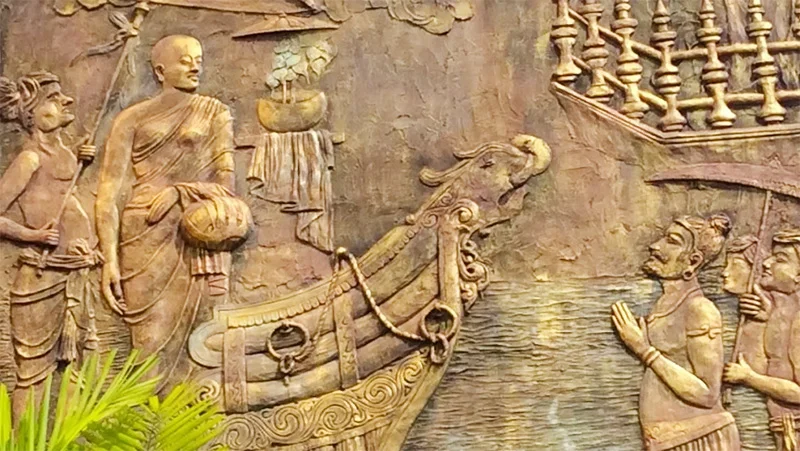
Unduvap Poya, which falls today, has great historical significance for Sri Lanka, as several important events occurred on that day but before looking into these, as the occasion demands, our first thought should be about impermanence. One of the cornerstones of Buddha’s teachings is impermanence and there is no better time to ponder over it than now, as the unfolding events of the unprecedented natural disaster exemplify it. Who would have imagined, even a few days ago, the scenes of total devastation we are witnessing now; vast swathes of the country under floodwaters due to torrential rain, multitudes of earth slips burying alive entire families with their hard-built properties and closing multiple trunk roads bringing the country to a virtual standstill. The best of human kindness is also amply demonstrated as many risk their own lives to help those in distress.
In the struggle of life, we are attached and accumulate many things, wanted and unwanted, including wealth overlooking the fact that all this could disappear in a flash, as happened to an unfortunate few during this calamitous time. Even the survivors, though they are happy that they survived, are left with anxiety, apprehension, and sorrow, all of which is due to attachment. We are attached to things because we fail to realise the importance of impermanence. If we do, we would be less attached and less affected. Realisation of the impermanent nature of everything is the first step towards ultimate detachment.
It was on a day like this that Arahant Bhikkhuni Sanghamitta arrived in Lanka Deepa bringing with her a sapling of the Sri Maha Bodhi tree under which Prince Siddhartha attained Enlightenment. She was sent by her father Emperor Ashoka, at the request of Arahant Mahinda who had arrived earlier and established Buddhism formally under the royal patronage of King Devanampiyatissa. With the very successful establishment of Bhikkhu Sasana, as there was a strong clamour for the establishment of Bhikkhuni Sasana as well, Arahant Mahinda requested his father to send his sister which was agreed to by Emperor Ashoka, though reluctantly as he would be losing two of his children. In fact, both served Lanka Deepa till their death, never returning to the country of their birth. Though Arahant Sanghamitta’s main mission was otherwise, her bringing a sapling of the Bo tree has left an indelible imprint in the annals of our history.
According to chronicles, King Devanampiyatissa planted the Bo sapling in Mahamevnawa Park in Anuradhapura in 288 BCE, which continues to thrive, making it the oldest living human planted tree in the world with a known planting date. It is a treasure that needs to be respected and protected at all costs. However, not so long ago it was nearly destroyed by the idiocy of worshippers who poured milk on the roots. Devotion clouding reality, they overlooked the fact that a tree needs water, not milk!
A monk developed a new practice of Bodhi Puja, which even today attracts droves of devotees and has become a ritual. This would have been the last thing the Buddha wanted! He expressed gratitude by gazing at the tree, which gave him shelter during the most crucial of times, for a week but did not want his followers to go around worshipping similar trees growing all over. Instead of following the path the Buddha laid for us, we seem keen on inventing new rituals to indulge in!
Arahant Sanghamitta achieved her prime objective by establishing the Bhikkhuni Sasana which thrived for nearly 1200 years till it fell into decline with the fall of the Anuradhapura kingdom. Unfortunately, during the Polonnaruwa period that followed the influence of Hinduism over Buddhism increased and some of the Buddhist values like equality of sexes and anti-casteism were lost. Subsequently, even the Bhikkhu Sasana went into decline. Higher ordination for Bhikkhus was re-established in 1753 CE with the visit of Upali Maha Thera from Siam which formed the basis of Siam Maha Nikaya. Upali Maha Thero is also credited with reorganising Kandy Esala Perahera to be the annual Procession of the Temple of Tooth, which was previously centred around the worship of deities, by getting a royal decree: “Henceforth Gods and men are to follow the Buddha”
In 1764 CE, Siyam Nikaya imposed a ‘Govigama and Radala’ exclusivity, disregarding a fundamental tenet of the Buddha, apparently in response to an order from the King! Fortunately, Buddhism was saved from the idiocy of Siyam Nikaya by the formation of Amarapura Nikaya in 1800 CE and Ramanna Nikaya in 1864 CE, higher ordination for both obtained from Burma. None of these Niakya’s showed any interest in the re-establishment of Bhikkhuni Sasana which was left to a band of interested and determined ladies.
My thoughts and admiration, on the day Bhikkhuni Sasana was originally established, go to these pioneers whose determination knew no bounds. They overcame enormous difficulties and obtained higher ordination from South Korea initially. Fortunately, Ven. Inamaluwe Sri Sumangala Thero, Maha Nayaka of Rangiri Dambulla Chapter of Siyam Maha Nikaya started offering higher ordination to Bhikkhunis in 1998 but state recognition became a sore point. When Venerable Welimada Dhammadinna Bhikkhuni was denied official recognition as a Bhikkhuni on her national identity card she filed action, with the support of Ven. Inamaluwe Sri Sumangala Thero. In a landmark majority judgement delivered on 16 June, the Supreme Court ruled that the fundamental rights of Ven. Dhammadinna were breached and also Bhikkhuni Sasana was re-established in Sri Lanka. As this judgement did not receive wide publicity, I wrote a piece titled “Buddhism, Bhikkhus and Bhikkhunis” (The Island, 10 July 2025) and my wish for this Unduvap Poya is what I stated therein:
“The landmark legal battle won by Bhikkhunis is a victory for common sense more than anything else. I hope it will help Bhikkhuni Sasana flourish in Sri Lanka. The number of devotees inviting Bhikkhunis to religious functions is increasing. May Bhikkhunis receive the recognition they richly deserve.” May there be a rapid return to normalcy from the current tragic situation.”
by Dr Upul Wijayawardhana
Opinion
Royal Over Eighties

The gathering was actually of ‘Over Seventies’ but those of my generation present were mostly of the late eighties.
Even of them I shall mention only those whom I know at least by name. But, first, to those few of my years and older with whom speech was possible.
First among them, in more sense than one, was Nihal Seneviratne, at ninety-one probably the oldest present. There is no truth to the story that his state of crisp well-being is attributable to the consumption of gul-bunis in his school days. It is traceable rather to a life well lived. His practice of regular walks around the house and along the lane on which he lives may have contributed to his erect posture. As also to the total absence of a walking stick, a helper, or any other form of assistance as he walked into the Janaki hotel where this gathering took place.
Referencing the published accounts of his several decades-long service in Parliament as head of its administration, it would be moot to recall that his close friend and fellow lawyer, J E D Gooneratne, teased him in the following terms: “You will be a bloody clerk all your life”. He did join service as Second Assistant to the Clerk to the House and moved up, but the Clerk became the Secretary General. Regardless of such matters of nomenclature, it could be said that Nihal Seneviratne ran the show.
Others present included Dr. Ranjith de Silva, Surgeon, who was our cricket Captain and, to the best of my knowledge, has the distinction of never engaging in private practice.
The range of Dr. K L (Lochana) Gunaratne’s interests and his accomplishments within each are indeed remarkable. I would think that somebody who’d received his initial training at the AA School of Architecture in London would continue to have architecture as the foundation of his likes /dislikes. Such would also provide a road map to other pursuits whether immediately related to that field or not. That is evident in the leadership roles he has played in the National Academy of Sciences and the Institute of Town Planners among others. As I recall he has also addressed issues related to the Panadura Vadaya.
My memories of D L Seneviratne at school were associated with tennis. As happens, D L had launched his gift for writing over three decades ago with a history of tennis in Sri Lanka (1991). That is a game with which my acquaintance is limited to sending a couple of serves past his ear (not ‘tossing the ball across’ as he asked me to) while Jothilingam, long much missed, waited for his team mates to come for practices. It is a game at which my father spent much time both at the Railway sports club and at our home-town club. (By some kind of chance, I recovered just a week ago the ‘Fred de Saram Challenge Cup’ which, on his winning the Singles for the third time, Koo de Saram came over to the Kandana Club to hand over to him for keeps. They played an exhibition match which father won). D L would know whether or not, as I have heard, in an exhibition match in Colombo, Koo defeated Frank Sedgman, who was on his triumphant return home to Oz after he had won the Wimbledon tournament in London.
I had no idea that D L has written any books till my son brought home the one on the early history of Royal under Marsh and Boake, (both long-bearded young men in their twenties).
It includes a rich assortment of photographs of great value to those who are interested in the history of the Anglican segment of Christian missionary activity here in the context of its contribution to secondary school education. Among them is one of the school as it appeared on moving to Thurstan road from Mutwal. It has been extracted from the History of Royal, 1931, done by students (among whom a relative, Palitha Weeraman, had played a significant role).
As D L shows, (in contra-distinction to the Catholic schools) the CMS had engaged in a largely secular practice. Royal remained so through our time – when one could walk into the examination room and answer questions framed to test one’s knowledge of Christianity, Buddhism, Hinduism and Islam; a knowledge derived mostly from the lectures delivered by an Old Boy at general assembly on Friday plus readings from the Dhammapada, the Bhagavad Gita, the St. John’s version of the Bible or the Koran recited by a student at senior assembly on Tuesday / Thursday.
D L’s history of Royal College had followed in 2006.
His writing is so rich in detail, so precise in formulation, that I would consider this brief note a simple prompt towards a publisher bringing out new editions at different levels of cost.
It was also a pleasure to meet Senaka Amarasinghe, as yet flaunting his Emperor profile, and among the principal organisers of this event.
The encounter with I S de Silva, distinguished attorney, who was on Galle road close to Janaki lane, where I lived then was indeed welcome. As was that with Upali Mendis, who carried out cataract surgery on my mother oh so long ago when he was head of the Eye Hospital. His older brother, L P, was probably the most gifted student in chemistry in our time.
Most serendipitous perhaps was meeting a son of one of our most popular teachers from the 1950s, – Connor Rajaratnam. His cons were a caution.
by Gamini Seneviratne
Opinion
“Regulatory Impact Assessment – Not a bureaucratic formality but essentially an advocacy tool for smarter governance”: A response
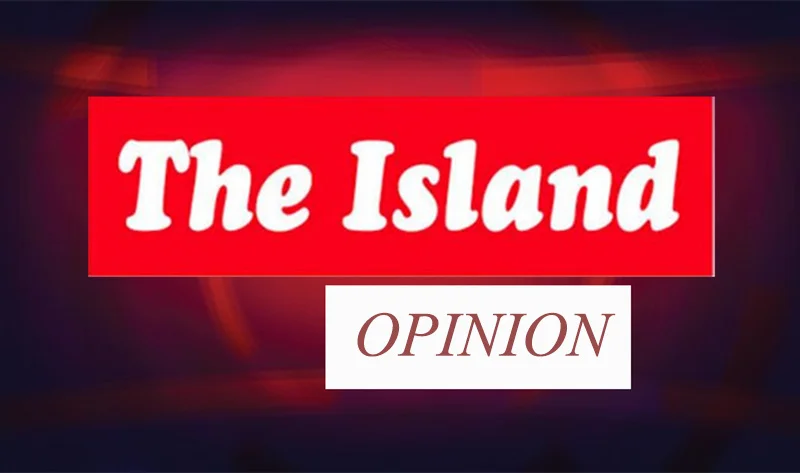
Having meticulously read and re-read the above article published in the opinion page of The Island on the 27 Nov, I hasten to make a critical review on the far-reaching proposal made by the co-authors, namely Professor Theekshana Suraweera, Chairman of the Sri Lanka Standards Institution and Dr. Prabath.C.Abeysiriwardana, Director of Ministry of Science and Technology
The aforesaid article provides a timely and compelling critique of Sri Lanka’s long-standing gaps in evidence-based policymaking and argues persuasively for the institutional adoption of Regulatory Impact Assessment (RIA). In a context where policy missteps have led to severe economic and social consequences, the article functions as an essential wake-up call—highlighting RIA not as a bureaucratic formality but as a foundational tool for smarter governance.
One of the article’s strongest contributions is its clear explanation of how regulatory processes currently function in Sri Lanka: legislation is drafted with narrow legal scrutiny focused mainly on constitutional compliance, with little or no structured assessment of economic, social, cultural, or environmental impacts. The author strengthens this argument with well-chosen examples—the sudden ban on chemical fertilizer imports and the consequences of the 1956 Official Language Act—demonstrating how untested regulation can have far-reaching negative outcomes. These cases effectively illustrate the dangers of ad hoc policymaking and underscore the need for a formal review mechanism.
The article also succeeds in demystifying RIA by outlining its core steps—problem definition, option analysis, impact assessment, stakeholder consultation, and post-implementation review. This breakdown makes it clear that RIA is not merely a Western ideal but a practical, structured, and replicable process that could greatly improve policymaking in Sri Lanka. The references to international best practices (such as the role of OIRA in the United States) lend credibility and global context, showing that RIA is not experimental but an established standard in advanced governance systems.
However, the article could have further strengthened its critique by addressing the political economy of reform: the structural incentives, institutional resistance, and political culture that have historically obstructed such tools in Sri Lanka. While the challenges of data availability, quantification, and political pressure are briefly mentioned, a deeper analysis of why evidence-based policymaking has not taken root—and how to overcome these systemic barriers—would have offered greater practical value.
Another potential enhancement would be the inclusion of local micro-level examples where smaller-scale regulations backfired due to insufficient appraisal. This would help illustrate that the problem is not limited to headline-making policy failures but affects governance at every level.
Despite these minor limitations, the article is highly effective as an advocacy piece. It makes a strong case that RIA could transform Sri Lanka’s regulatory landscape by institutionalizing foresight, transparency, and accountability. Its emphasis on aligning RIA with ongoing national initiatives—particularly the strengthening of the National Quality Infrastructure—demonstrates both pragmatism and strategic vision.
At a time, when Chairmen of statutory bodies appointed by the NPP government play a passive voice, the candid opinion expressed by the CEO of SLSI on the necessity of a Regulatory Impact Assessment is an important and insightful contribution. It highlights a critical missing link in Sri Lanka’s policy environment and provides a clear call to action. If widely circulated and taken seriously by policymakers, academics, and civil society, it could indeed become the eye-opener needed to push Sri Lanka toward more rational, responsible, and future-ready governance.
J. A. A. S. Ranasinghe,
Productivity Specialty and Management Consultant
(rathula49@gmail.com)
-
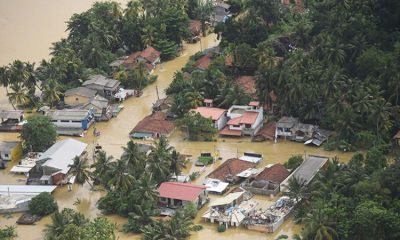
 News5 days ago
News5 days agoWeather disasters: Sri Lanka flooded by policy blunders, weak enforcement and environmental crime – Climate Expert
-

 Latest News6 days ago
Latest News6 days agoLevel I landslide RED warnings issued to the districts of Badulla, Colombo, Gampaha, Kalutara, Kandy, Kegalle, Kurnegala, Natale, Monaragala, Nuwara Eliya and Ratnapura
-

 Latest News6 days ago
Latest News6 days agoINS VIKRANT deploys helicopters for disaster relief operations
-
News2 days ago
Lunuwila tragedy not caused by those videoing Bell 212: SLAF
-

 Latest News6 days ago
Latest News6 days agoDepartment of Irrigation issues Critical flood warning to the Kelani river basin
-

 Latest News4 days ago
Latest News4 days agoLevel III landslide early warnings issued to the districts of Badulla, Kandy, Kegalle, Kurunegala, Matale and Nuwara-Eliya
-
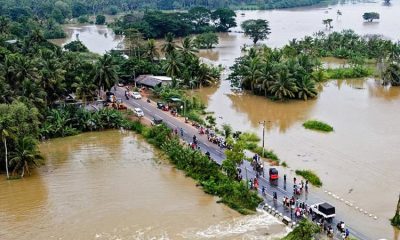
 News6 days ago
News6 days agoCountry reels under worst weather in living memory
-

 Editorial6 days ago
Editorial6 days agoNeeded: Action not rhetoric




